Complete Solutions to Mineral Nutrition of chapter MINERAL NUTRITION of Class 11 book with complete answers and questions
| Class 11 | BIOLOGY |
| Chapter | MINERAL NUTRITION |
| NCERT FINGERTIPS | Mineral Nutrition |
| Number Of Questions | 100 |
| Academic Year | 2023-24 |
The technique of hydroponics was first demonstated by
00:56View SolutionThe technique of growing plants in a nutrients solution, in complete absence of soil is called as
00:54View SolutionHydroponics or soilless culture helps in knowing
01:15View SolutionThe technique of hydroponics is being employed for the commercial production of vegetables like
02:00View Solution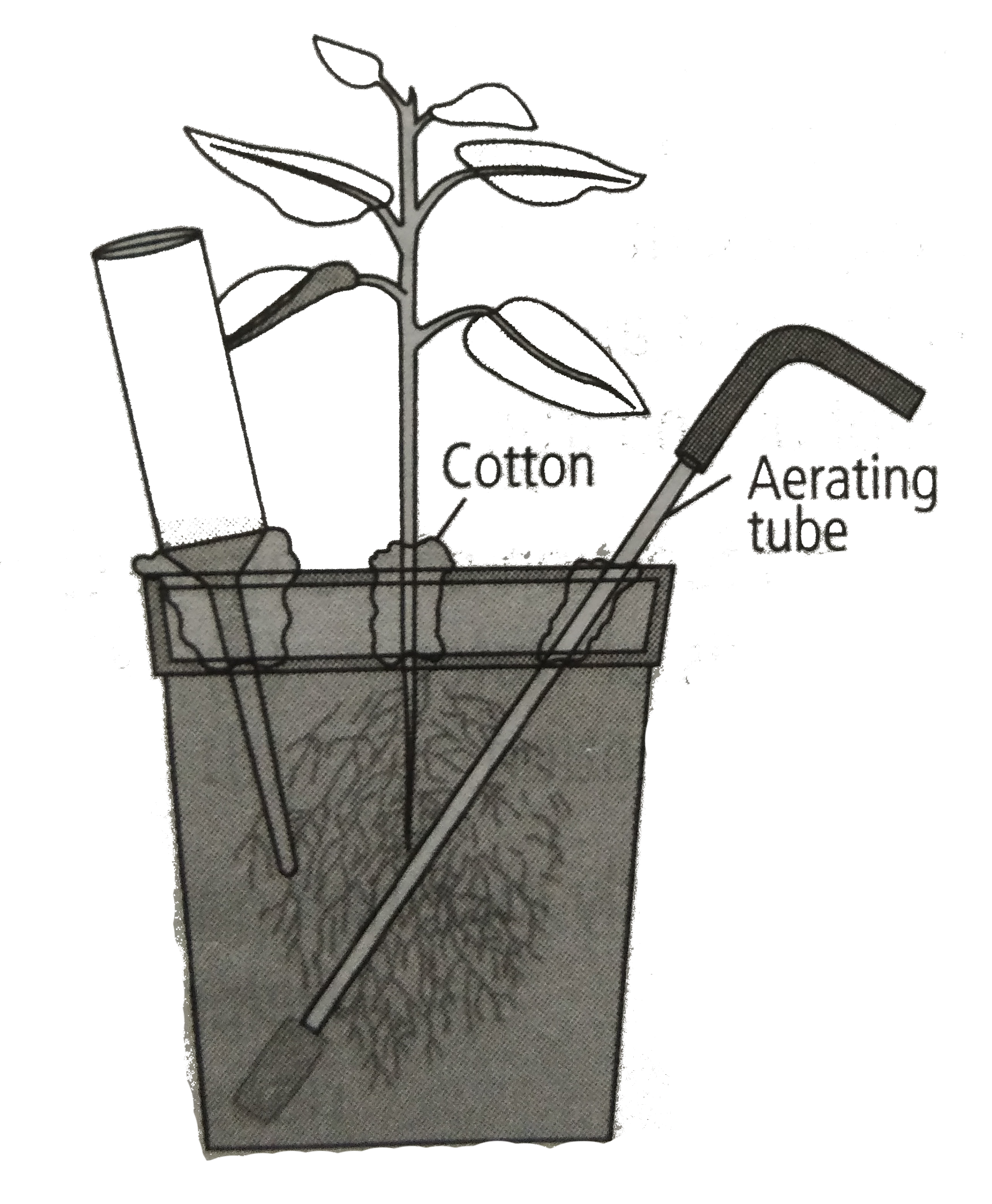
The given experimental set-up is used02:00View Solution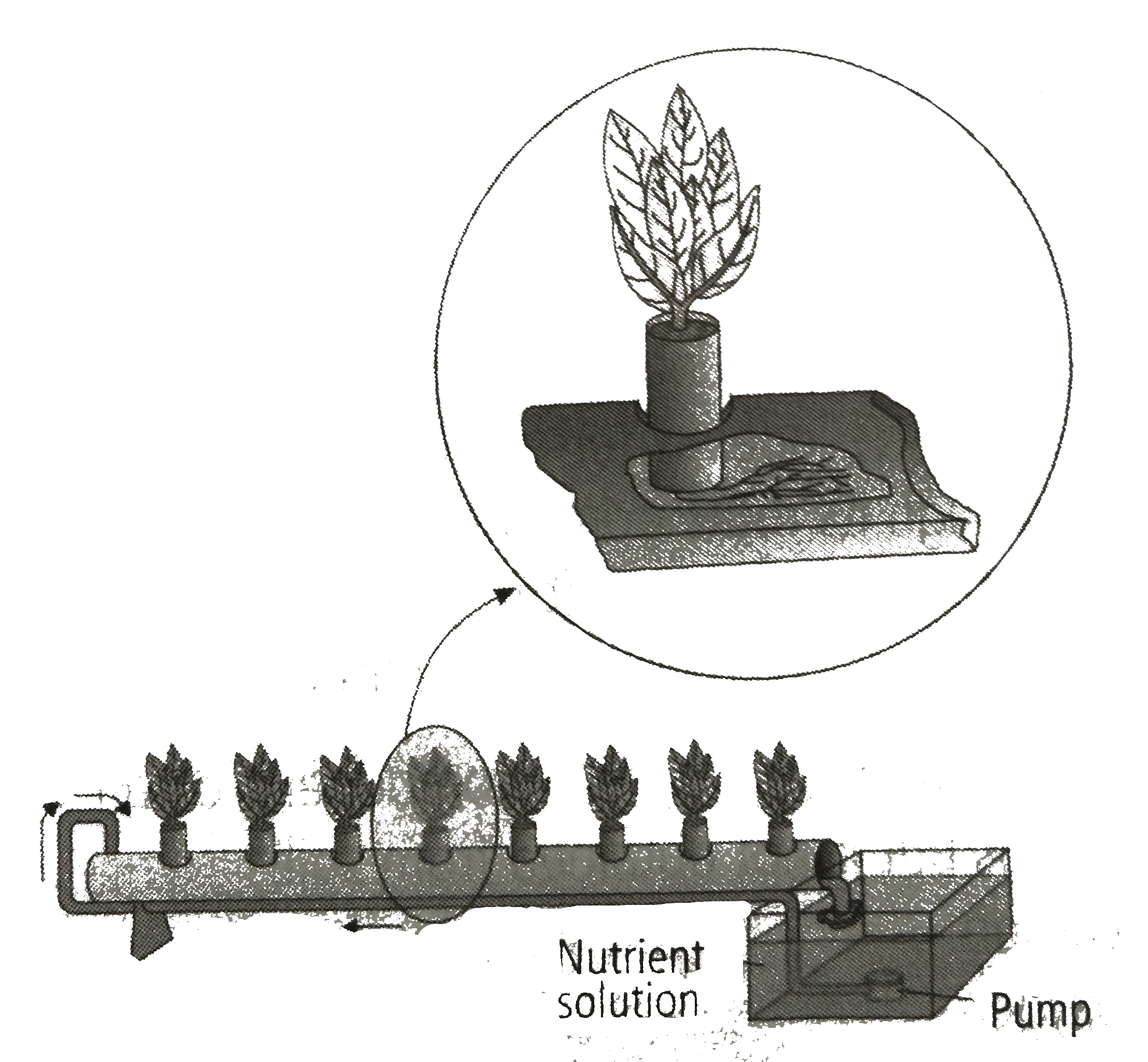
Refer to the given figure and select the incorrect option regarding it02:26View SolutionSelect the correct statement (s) regarding the solution culture techniques.
02:29View SolutionMore than ___elements of the ___discovered so far are found in different plants.
02:30View SolutionWhich of the following is not criterion for essentiality of an element?
03:41View SolutionEssential elements are
02:12View SolutionWhich of the following are macronutrients?
01:20View SolutionWhich of the four most abundant element in most plants (C, H, O and N), does a terrestrial green plant procure mainly through its roots from the soil?
02:02View SolutionThe macronutrient______is a component of all organic compounds but is not obtained from soil.
01:38View SolutionMicronutrients are present in plant tissues in concentrations less than ____of dry matter.
01:28View SolutionSelect the option that contains micronutrients only
01:21View SolutionMatch column I with column II and select the correct option from the codes given below
`{:(underset("(Activator element) ")("Column I"),underset("(Enzyme)")("Column II")),(A" "Mg^(2+) ,,(i)" Nitrate reductase"),(B." "Zn^(2+),(ii)." RuBisCO, PEPCase"),(C." "Mo,(ii)." Alcohol dehydrogenase"):}`01:52View SolutionMonovalents (e.g., `Na^(+),K^(+)`)_____membrane permeability while divalents (e.g., `Ca^(2+)`)_____the same.
02:43View SolutionThe inorganic essential elements which are obtained from the soil are called as
02:15View SolutionThe non-mineral elements are
01:43View SolutionPhosphorus (P) is a structural element of
01:25View SolutionWhich of the following essential elements plays an important role in opening and closing of stomata?
01:52View SolutionWhich of the following is not one of the three plants macronutrietns included in most fertilisers?
02:00View SolutionMinerals which maintain cation-anion balance in cells are
01:16View SolutionSulphur is a constituents of which of the following amino acids?
03:01View SolutionWhich of the following elements are required for chlorophyll synthesis?
01:58View SolutionSome fundtion of a nutrients element are given below
(i). Important constituents of proteins involved in ETS
(ii). Activator of catalase
(iii). Important constituent of cytoshrome
(iv). Essential for chlorophyll systhesis
the concerned nutrient is_______02:14View SolutionWhich of the following minerals activate the enzymes involved in respiration?
01:48View SolutionBest defined function of manganese in green plants is
03:40View SolutionSelect the correctly matched pair
02:44View SolutionMinerals associated with redox reaction are
03:21View SolutionSelect the incorrectly matched pair.
03:39View SolutionThe two elements responsible for splitting of `H_(2)O` to liberate `O_(2)` during photosynthesis are
02:08View SolutionDeficiency symptoms of readily mobilised essential elements will first appear in_____
02:25View SolutionRead the given statements and select the correct option
Statement-1: Deficiency symptoms of N, K ad Mg are first visible in the senescent leaves
Statement-2: Biomolecules containing these elements are broken available for mobilising to younger leaves.02:13View SolutionDeficiency symptoms tend to appear first in_____whenever the essential elements are relatively immobile and are not transported out of the mature organs.
02:24View SolutionWhile in N, K and Mg deficiency, chlorosis appears first in ____leaves, in S and Ca deficiency,_____ leaves are the first to be affected
02:41View SolutionChlorosis, i.e., loss of chlorophyll leading to yellowing in leaves, is caused by the deficiency of
02:17View SolutionNecrosis refers to
01:38View SolutionNecrosis mainly occurs by the deficlency of
02:09View SolutionDeficiency of which of the following elements delay flowering in plants?
03:58View SolutionWhich of the following is not a deficiency symptoms of minerals?
04:39View SolutionPremature leaf fall is due to deficiency of
04:06View SolutionYellowish edges appear in leaves deficient in
03:42View SolutionMineral ion concentration in tissues that reduces the dry weight of tissues by about 10% is considered as
03:09View SolutionSelect the correct statement regarding manganese toxicity.
04:02View SolutionMinerals are absorbed in the form of
03:43View SolutionWith reference of absorption of minerals, the term 'outer space' represents_____while 'inner space' represents_____.
04:10View SolutionWhich of the following statements about minerals absorption in plants is correct?
03:29View SolutionMineral salts are translocated through (i) along with the (ii) steam of water. Which is pulled up through the plant by transpirational pull. Fill up the bhlanks in the given statements and select the correct option
03:36View SolutionMineral nutrients absorbed by roots, move to leaves through
02:08View SolutionRead the given statement and select the correct option. Statement-1: Soil serves as a reservoir of essential elements.
Statement-2: Soil develops, over the years, through physical and chemical weathering of rocks.03:08View SolutionWhich one is the major constituent of proteins, nucleic acids, vitamins and hormones?
03:17View SolutionNitrogen is a limiting nutrient for
03:11View SolutionOne example of a nutrient in its reduced form is
01:59View SolutionThe process of conversion of atmospheric free `N_(2)` gas to nitrogenous compounds like `NH_(3)` is termed as
01:58View SolutionNitrogen and hydrogen combine to form ammonia under high temperature and pressure conditions this is an example of
02:30View SolutionDecomposition of organic nitrogen of dead plants and animals into ammonia is called.______
02:59View SolutionNitrite is oxidised to nitrate with the help of
02:55View SolutionNitrifying bacteria
01:50View Solution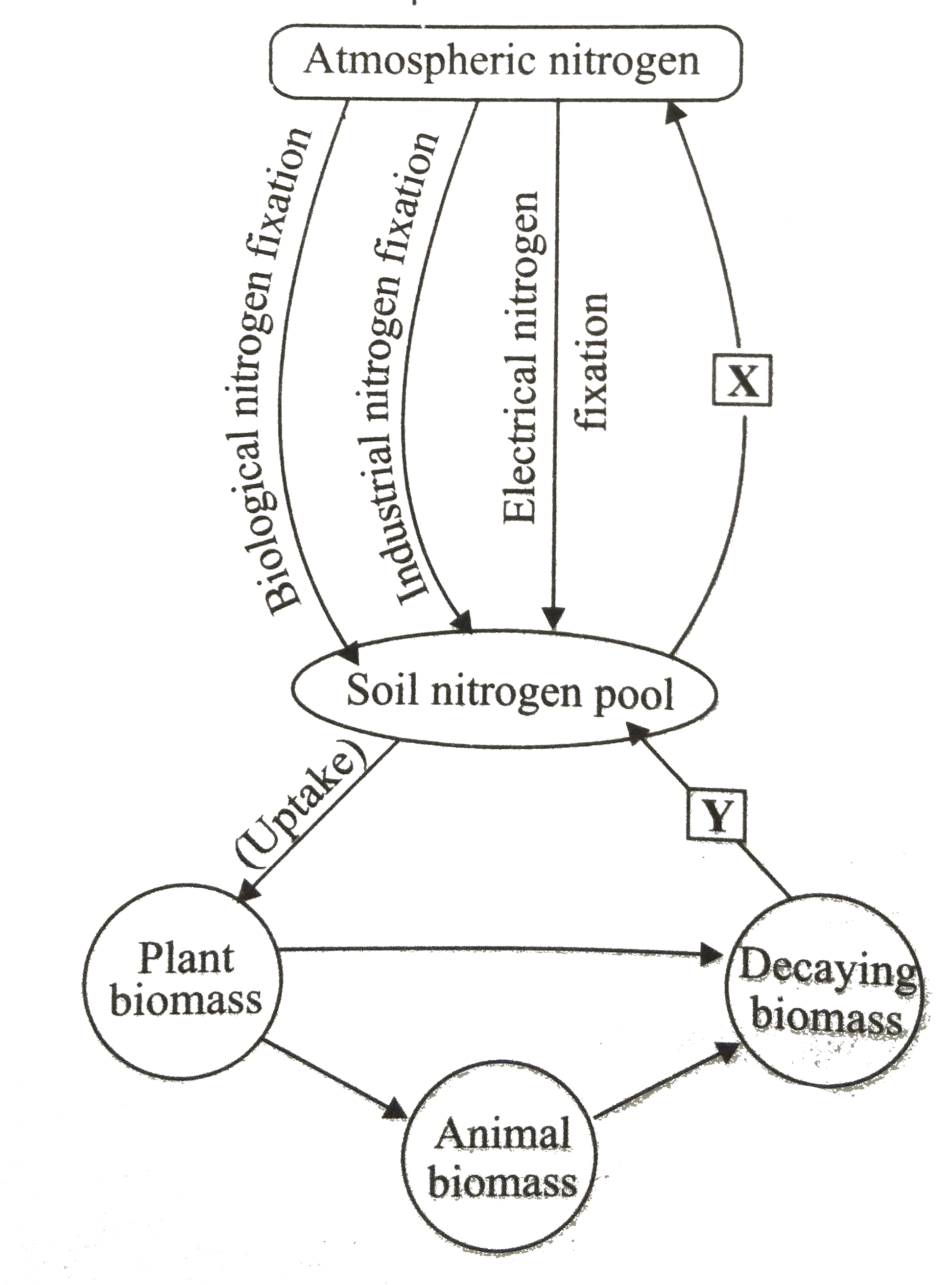
Identify the labels X and Y in the given outline of `N_(2)` cycle and select the correct option.03:22View SolutionNitrogen is absorbed by plants in form of
02:05View SolutionThe process of conversion of soil nitrates into free `N_(2)` is called (I) and is carried out by bacteria (II).
02:41View SolutionThe process that is the opposite of nitrogen fixation is
03:37View SolutionMatch column I with column II and select the correct option from the given codes:
`{:("Column I","Column II"),(A" nitrosomones Nitrosococcus",(i)." Ammonia to nitrite"),(B" Nitrobacter,Nitrocystic",(ii)." Nitrite to nitrate"),(C" Pseudomonas",(iii)." Nitrate to "N_(2)):}`02:48View SolutionWhich one of the following is a free-living obligate anaerobic bacterium?
02:02View SolutionThe limiting factor in nitrogen fixation of soil is
02:44View SolutionAll `N_(2)` fixers belong to
01:57View SolutionThe largest resevoir of nitrogen on earth is
01:53View Solutionif by radiation all nitrogenase enzyme is inactivated, then there will be no
02:01View SolutionA farmer adds Azotobacter culture to soil before sowing maize. Which mineral element will be replenished by doing so?
02:19View Solution_______is a free-living `N_(2)`-fixing aerobic bacterium.
02:15View SolutionWhich of the following is a non-symbiotic nitrogen fixing prokaryote?
03:27View SolutionWhich of the following is a free-living nitrogen fixing cyanobacteria?
01:59View SolutionSymbiotic bacteria are found in the root nodules of members family
02:13View SolutionThe bacterium_____belonging to group actinomycetes, produces `N_(2)-`fixing nodules on the roots of non-leguminous plants (e.g., Alnus)
02:08View SolutionSelect the mismatched pair.
02:42View SolutionCertain non-leguminous plants also form nodules to fix `N_(2)`. Example of such plants is
01:53View Solution`N_(2)`-fixing blue-green alga Anabaena which is extensively used in rice cultivation, forms symbiotic association with
03:26View SolutionThe nodules present in the leguminous plants appear pink in colour due to the presence of
02:44View SolutionDuring nodule formation in leguminous plants, an infection thread is produced carrying the (i) into the (ii) of the root, where they initiate the nodule formation in the (iii) of the root. Fill up the blanks by choosing the correct option.
03:47View Solution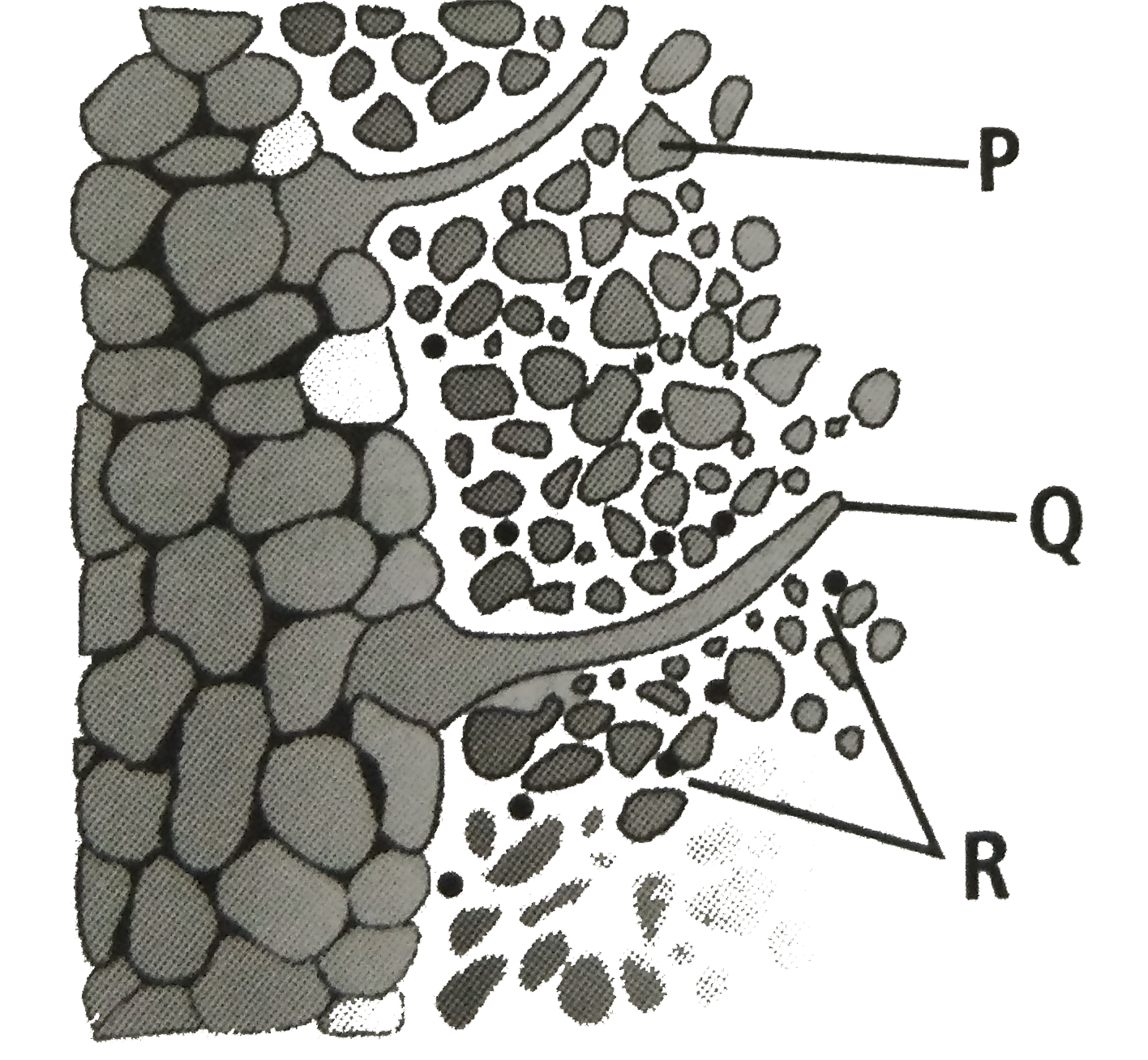
Refer to the given figure and select the correct option.01:47View Solution
Study the given figures carefully showing the development of root nodules and arrange them in a correct sequence.04:05View Solution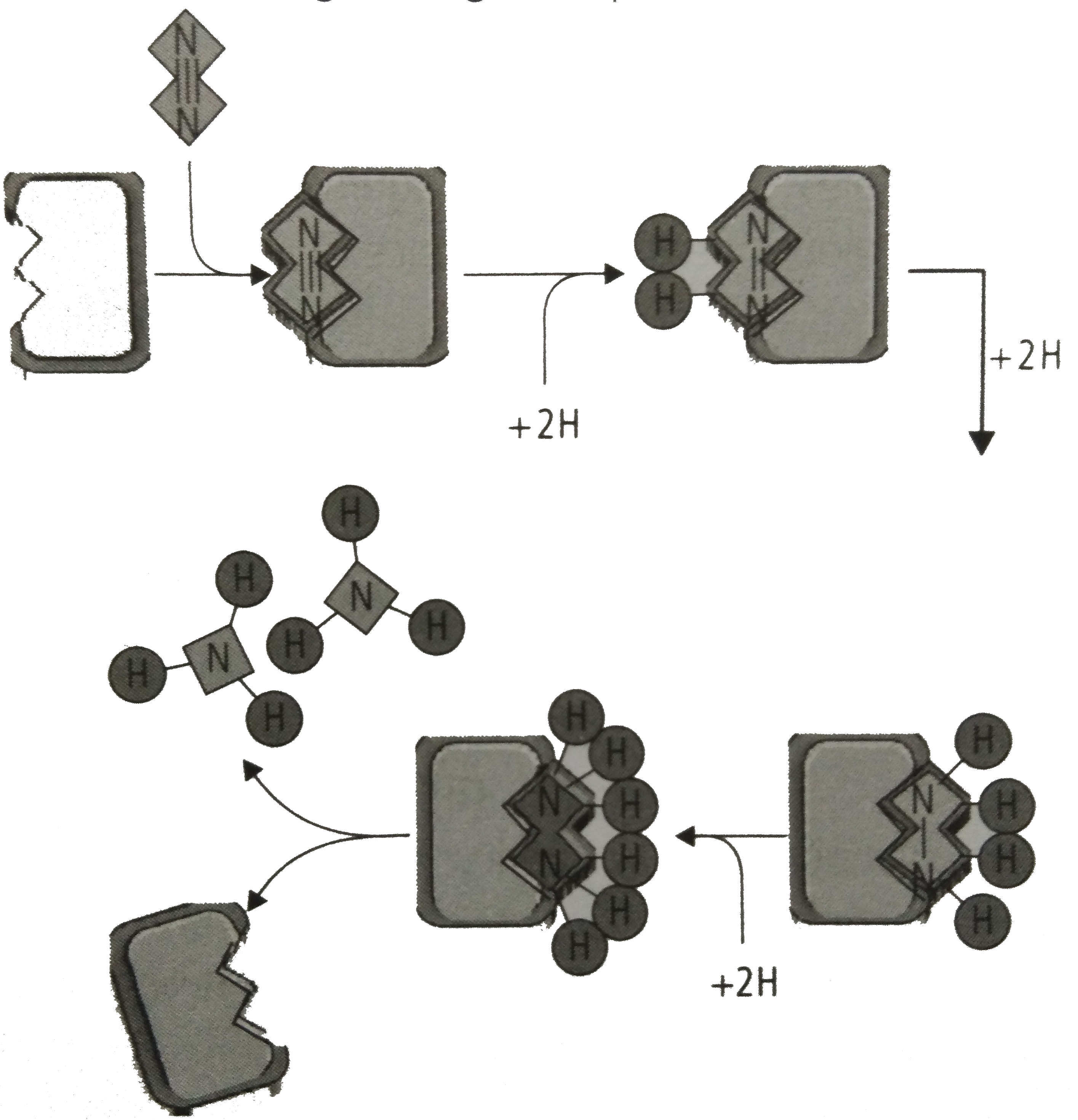
What dows the given figure represent?02:25View SolutionDuring `N_(2)` fixation, reduction of one molecule of nitrogen into 2 molecules of `NH_(3)` consumes _____molecules of ATP.
02:12View SolutionWhich one is the correct equation of nitrogen fixation?
02:29View SolutionThe cofactor of nitrate reductase is
04:29View SolutionLeghaemoglobin is produced in response to
03:49View SolutionWhich of the following statements is incorrect about leghaemoglobin?
03:33View Solution______conditions are created by leghaemoglobin in the root nodule of a legume.
03:00View SolutionRead the following statements and select the correct answer.
(i). Rhizobium leguminosarum is also known as Bacillus radicicola.
(ii). Nitrifying bacteria (Nitrosomonas, etc.) are chemoautotrops.
(iii). Enzyme nitrogenase fixes `N_(2)` under aerobic condition.
(iv). Leghaemoglobin creates aerobic conditions for the enzyme nitrogenase.03:31View SolutionAmmonia synthesis by nitrogenase requires
03:30View SolutionRead the following statements and select the incorrect ones.
(i). The co-cordinated activites of the legume and Rhizobium bacteria depend on chemical interations between the symbiotic partners.
(ii). Leguminous roots secrete chemical attractants that attract Rhizobium bacteria living nearby.
(iii). N,P and K usually do not get dificint in soil due to their low plant requirement
(iv). Nitrogen cycle is regular circulation of nitrogen amongst oliving organisms with its reservoir pool in lithosphere and cycling pool in atmosphere.04:51View SolutionRefer to the given reaction
`alpha`-Ketoglutaric acid `+NH_(4)^(+)+NADPHunderset("dehydrogenase")overset("Glutamate")to"Glutamate"+H_(2)O+NADP` is represents03:46View SolutionSelect the option which completes the given equation for reductive aminiation
`overset((I))to+NH_(4)^(+)+NAD(P)Hoverset((II))to"Glutamate"+H_(2)O+NAD(P)`01:44View SolutionThe process of transfer of amino group from one amino acid to the keto group of a keto acid is called as _______
02:49View SolutionRefer to the given reacton, what does it depict?
`underset("Amino-donor")(R_(1)-underset(NH_(3)^(+))underset(|)overset(H)overset(|)(C)-COO^(-))+underset("Amino-acceptor")(R_(2)-underset(O)underset(||)(C)-C)OO^(-)hArrR_(1)underset(O)underset(||)(C)-COO^(-)+R_(2)-underset(NH_(3)^(+))underset(|)overset(H)overset(|)(C)-COO^(-)`02:40View SolutionFrom______acid, more than 17 amino acids are formed through transamination
02:03View SolutionAmides are different from amino acids as they contain more
02:06View SolutionAmides are transported to the other parts of the plant via
02:02View SolutionNodules in soybean plant export the fixed nitrogen in the form of
03:10View Solution
Mineral Nutrition questions and complete solutions for chapter MINERAL NUTRITION of MTG BIOLOGY (HINGLISH) of Class 11
